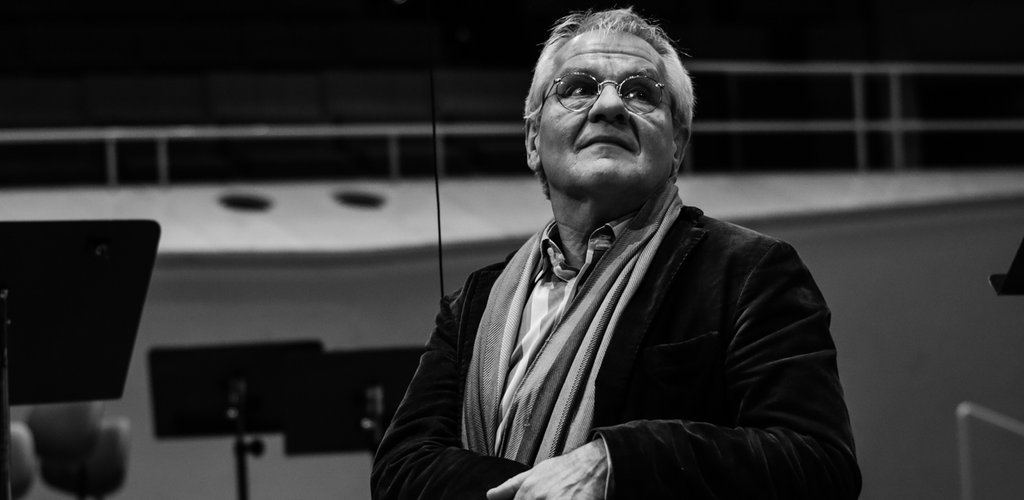The New York Times has called Reinhard Goebel a “beacon in a sea of mediocrity” – he had a deep influence on developing historical performances with historical instruments of the baroque style. But what does Michael Jackson have to do with baroque music and what is behind the music sheet? We made an interview with the German conductor whom you can meet on 8 and 9 June, at the Music Academy, Budapest.
This is not the first time that you are the conductor of the baroque ensemble of the Budapest Festival Orchestra. I learned from the musicians that you were the one who gave them the sparkle of a new approach to baroque music. How do you remember, what did you teach them seven years ago?
Reinhard Goebel: I can’t exactly remember what I told them, but look, this is my profession, I am as a specialist in 18th century music since 40 years. So, I am sure that the most important idea was that I explained them the tempo. 18th century music has shorter bows. I mean not the physical bow, but the musical one. And in between them there is a very fast fingering. (He shows it in sound: tira-ta-tam-tiriri). It means they had a completely different idea of dynamics in those times. In general, the instruments had to be loud and fast, not soft, but still ideal. And in between there is a dynamic relation between every note, every beat. So, you can recognise immediately why is there a triple measure, why does it sound elegant. Because a triple measure has one accent and two not accented sounds.
It seems to be similar to the different way of dancing. The newer ones are much faster as the old baroque dance movements.
R.G.: For sure they danced slower in that time than e.g. Michael Jackson did. (laughing) And more civilised than we do today. But the picture of the music does not give this difference. Summarised there are two answers to your question. One was this and the general answer is: the system of the old music is only a fraction of what has to come out, how it sounds. The picture is so simple, but the music that should come out is so highly differentiated that the players are not used to read the stupid notes all day, but they make wonderful music out of it. They think “oh my God, who can discover what is meant behind it”.
That means you taught them to read the simple notes and find out what is behind them?
R.G.: Yes, that was in general what over all I did seven or eight years ago. And I am happy they liked it.
The baroque pieces you are going to play in Budapest are composed beside the most famous composers, like Telemann, Handel and Vivaldi by some who in Hungary we don’t really know. How did you choose the programme?
R.G.: There is a „red beam” in that programme. All of the pieces were written for the Dresden Court Orchestra. You must know that Bach was living in the next neighbouring town to Dresden: Leipzig. So, Bach was friend with all the Dresden composers. Especially with the concert master of the court, who collected most of the music for the court. His name was Johann Georg Pisendel, a German baroque musician, violinist and composer who, for many years led the Court Orchestra in Dresden, then the finest instrumental ensemble in Europe. He was a student of Vivaldi and as such he was sent out to Paris, Rome, Venice and other cities to find the best musicians and composers for the court. What I wanted to show with this programme is that the Court Orchestra in Dresden was a multi-ethnical orchestra. There was French music, Italian music, German music and even Czech music. Jan Dismas Zelenka was the first Czech composer, who insisted on being Czech and didn’t want to transform his name to Italian sounding “Zelenkissimi”, or something like that. And the court allowed him to be Czech. His music was based on the wonderful East European rhythm, which Hungarians have as well. So, my idea was to recover a full range concert from the Dresden Court Orchestra in that period around 1720. Although Handel and Telemann did not belong to the court, they met there exactly 300 hundred years ago in 1719 in order to listen to the music that was made for the wedding of the son of August der Starke. So, it is a historical programme with lot of composers and different styles of music and different combinations of instruments.
The guest soloist is going to be the violinist Mirijam Contzen. You know each other since a long time. What do we have to know about her?
R.G.: Mirijam is a wonderful violinist. She was a child prodigy. “Ein Wunderkind”. She is half Japanese and half German. We have worked together for fifteen years now and we do understand each other completely. We never get in a fight with each other, which is very easy to do among artists, you know.
Yes, but I don’t think you are someone who easily gets in fight with anybody.
R.G.: Oh, I am. It can happen to me. But Mirijam is an exception, she plays all the famous violin concertos for me and I want to give her the experience to make baroque music with me. Since she is a teacher at the Berlin Music Hochschule, it is very important for her to learn this style, I can show her, so she can educate her students how to do it. But I must say in general that I like to work with artists who basically do agree about certain things, which are important to me.

